In the world of software, test automation is a game changer! 🚀 It's the secret weapon that helps teams speed up, work smarter, and create top-notch products. 🌟 But finding the right test automation service provider isn't easy.
No worries! Let this guide simplify the decision for you, leaving you with an easy choice. Selecting the correct provider is essential for your project, whether it involves tests like regression testing, load testing, performance testing, or assistance with mobile apps. In the rapidly evolving testing sector, selecting the correct automation provider is essential.
📌 Test Automation Services: Streamline testing with automation for speed, efficiency, and accuracy.
📌 Benefits: Boost speed, accuracy, and cost-effectiveness while improving software quality.
📌 Setup Plan: Analyze, prioritize, select tools, design data, execute, and document.
📌 Challenges: Finding tools, communication, strategy, investment, infrastructure, and skills.
📌 Selection Criteria: Consider requirements, compatibility, cost, quality, security, support, scalability, and integration.
📌 Quality Assurance: Focus on coverage, maintenance, data, integration, performance, error handling, version control, and reviews.
What are Services for Automated Testing?
Automated testing services are tools or services that automate software testing processes. They execute pre-written test cases, comparing expected outcomes with actual results to validate functionality, performance, and reliability. Continuous integration integrates testing into the development team's workflow, improving efficiency and reducing time.🔄
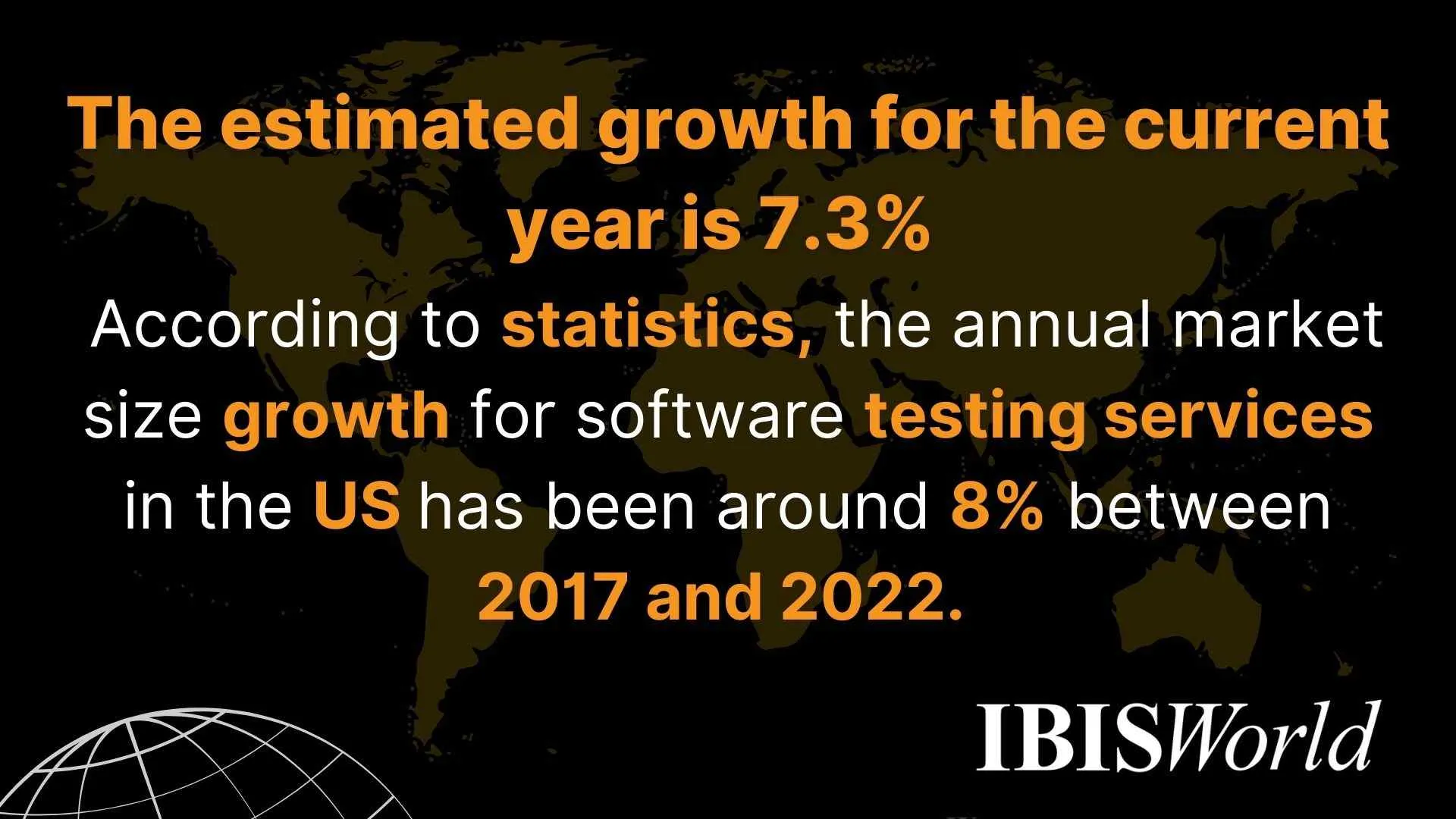
Functional Testing ensures individual functions meet requirements, while usability testing evaluates user-friendliness. integration testing checks modules work together seamlessly. Testing automation streamlines testing tasks using frameworks. Regression tests ensure new changes won't affect existing functionality. 🔄 These services help ensure high software quality. 🌟
The benefits of using automated testing services include:
- Increased speed and efficiency in testing, especially for large and complex applications. 🚀
- Higher accuracy due to the reduction of human error in repetitive tests. ✔️
- Cost-effectiveness over time, particularly in continuous development environments. 💰
- Broader test coverage and timely feedback to developers, enhance the development and deployment process. 📊

Test Automation Setup Plan
Creating a Test Automation Setup Plan involves key steps to ensure efficient, effective testing aligned with project goals. 🛠️ Evaluating automation approaches, technical skills, and business solutions helps estimate initial investments for achieving quality at speed. 💡
Here’s a high-level plan based on the latest best practices:
- Analyze Requirements and Identify Test Scenarios
- Start by thoroughly understanding the project requirements.
- Identify relevant test scenarios that cover all functionalities.
- Prioritize Test Cases for Automation
- Determine which tests will benefit most from automation.
- Prioritize based on factors like test frequency, complexity, and criticality.
- Choose the Right Automation Framework and Tools
- Select an automation framework that fits the project’s needs.
- Choose tools that are compatible with your technology stack.

- Design Test Data and Environment Setup
- Prepare test data that covers various test scenarios.
- Set up a stable test environment that mimics production settings
- Define Your Test Execution Strategy and Schedule
- Outline how and when the tests will be executed.
- Schedule tests to run during off-peak hours if necessary.
- Document the Plan
- Write down all the details of your test automation plan.
- Include scope, objectives, resources, schedules, and responsibilities.
Integration with CI/CD Pipelines
To enhance efficiency and ensure continuous testing, integrate the test automation plan with CI/CD pipelines. This integration allows for automated tests to be triggered with each code commit, ensuring immediate feedback and rapid detection of issues. By embedding automated tests within the CI/CD pipelines, you facilitate continuous testing, enabling faster development cycles, improving software quality, and achieving seamless deployment processes. 🌐

Test Automation Challenges
Test automation, while highly beneficial, comes with its own set of challenges, including the transition from manual tests to automation, addressing Mobile Test Automation complexities, and integrating with application development processes.
Here are some of the key challenges faced in test automation as of 2024:
- Finding the Right Framework and Tool
- Selecting the most suitable framework and tools that align with the project’s needs and technology stack. This ensures cost efficiency and cost savings while providing a reliable management tool for the team.🤝
- Effective Communication & Collaboration in Team
- Ensuring clear communication and collaboration among team members to facilitate smooth test automation processes.. 📣
- Identifying the Test Automation Strategy
- Developing a clear and effective strategy that defines what to test, how to test, and when to test.📊

- High Initial Investment
- Allocating budget for the initial setup costs, which can be significant but are offset by long-term benefits.📈
- Inadequate Testing Infrastructure
- Building and maintaining a robust testing infrastructure that can handle the demands of automated testing.🛠️
- Finding the Right Skills
- Acquiring and developing the necessary skills within the team to implement and maintain test automation.💻
These challenges highlight the importance of careful planning, resource allocation, and continuous learning to overcome obstacles and achieve successful test automation outcomes.
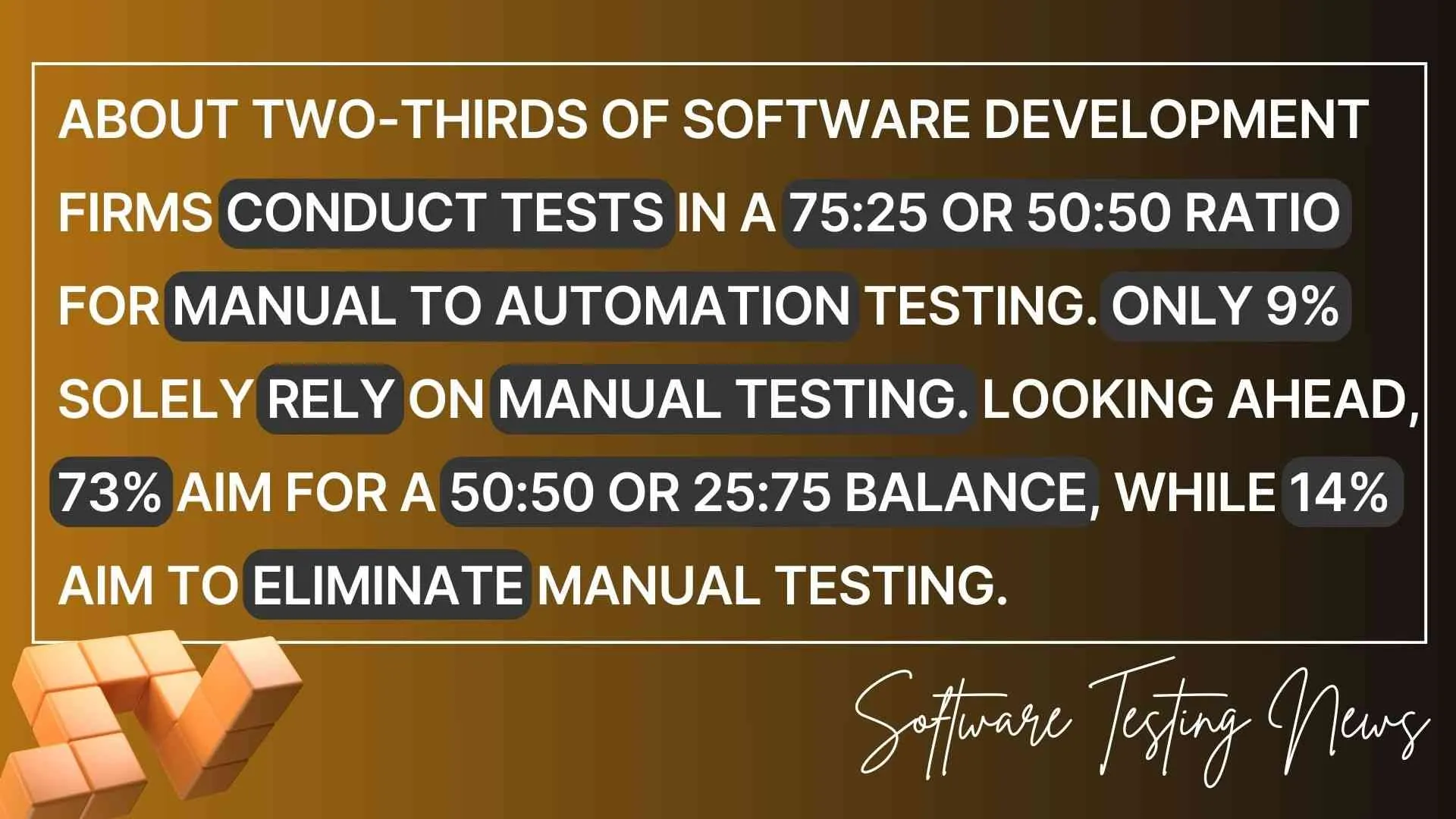
Basic Criteria We Should Consider When Choosing a Test Automation Service
When choosing a test automation service, it’s important to consider a set of criteria that will ensure the service aligns with your project’s needs and goals.
Here are some basic criteria to consider:
- Project Requirements
- Understand the specific needs of your project, including the scale, complexity, and the types of tests required.📋
- Tool Compatibility
- Ensure the service offers tools and technologies that are compatible with your project environment. 🔧
- Cost-Effectiveness
- Evaluate the cost of the service against the benefits it provides, considering both short-term and long-term perspectives. 💰
- Framework and Infrastructure
- The service should offer a robust framework and infrastructure that can handle your testing requirements.🔒
- Security and Privacy
- Verify that the service provider has measures in place to protect the security and privacy of your data.🚀
- Support and Maintenance
- Consider the level of support and maintenance offered by the service, including documentation, customer service, and updates.🛠️
- Scalability
- The service should be able to scale with your project as it grows and evolves.
- Integration Capabilities
- Check how easily the service can be integrated into your existing workflow and toolchain.🔄
By carefully evaluating these criteria, you can select a test automation service that will effectively support your testing strategy and contribute to the overall success of your project. Remember to also conduct a trial or pilot test if possible to see the service in action before making a final decision.
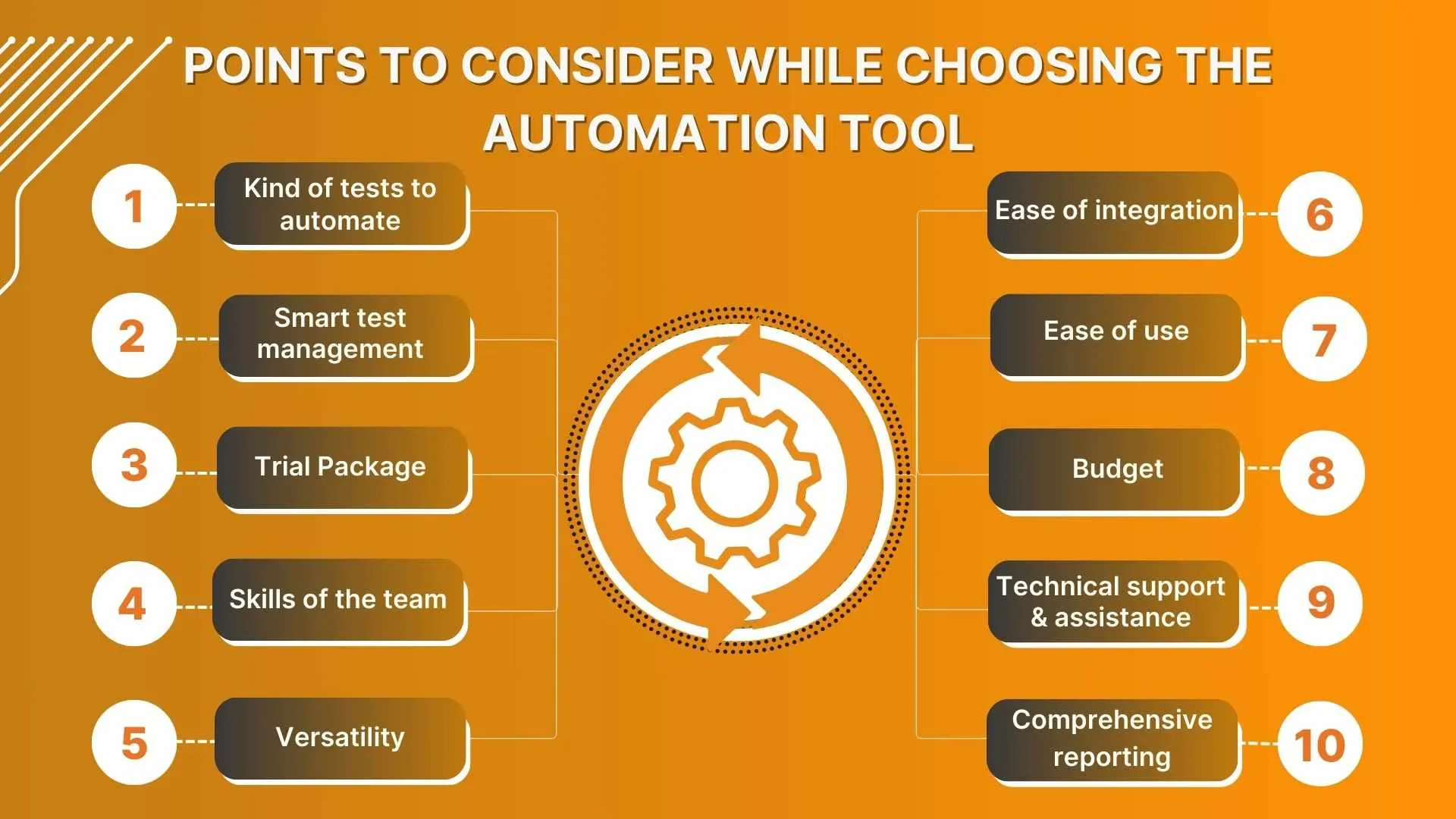
How They Ensure the Quality and Reliability of Automated Tests
Ensuring the quality and reliability of automated tests is crucial for effective software development. This involves thoroughly evaluating automation solutions to test software applications and products, ensuring comprehensive application testing to cover the entire scope of testing.🛠️
Here are some best practices and strategies that are commonly used:
- Comprehensive Test Coverage
- Design test cases that cover all aspects of the application, including positive, negative, boundary, and edge cases.
- Regular Maintenance of Test Scripts
- Keep test scripts up-to-date with application changes to prevent false positives and negatives.
- Use of Reliable Test Data
- Utilize accurate and varied test data to simulate real-world scenarios and uncover potential issues.
- Continuous Integration and Continuous Testing
- Integrate automated tests into the CI/CD pipeline to ensure they are run regularly and provide immediate feedback.
- Performance Monitoring
- Monitor test execution to identify performance bottlenecks and optimize test runs.
- Error Handling
- Implement robust error handling within test scripts to manage exceptions and unexpected application behaviour.
- Version Control
- Use version control systems to track changes in test scripts and facilitate collaboration among team members.
- Code Reviews
- Conduct peer reviews of test scripts to ensure they are well-written and maintainable.
By following these practices, teams can enhance the accuracy, consistency, and reliability of their automated tests, leading to higher-quality software products. It’s also important to have a well-defined scope for automated testing, identifying areas that are most beneficial for automation.
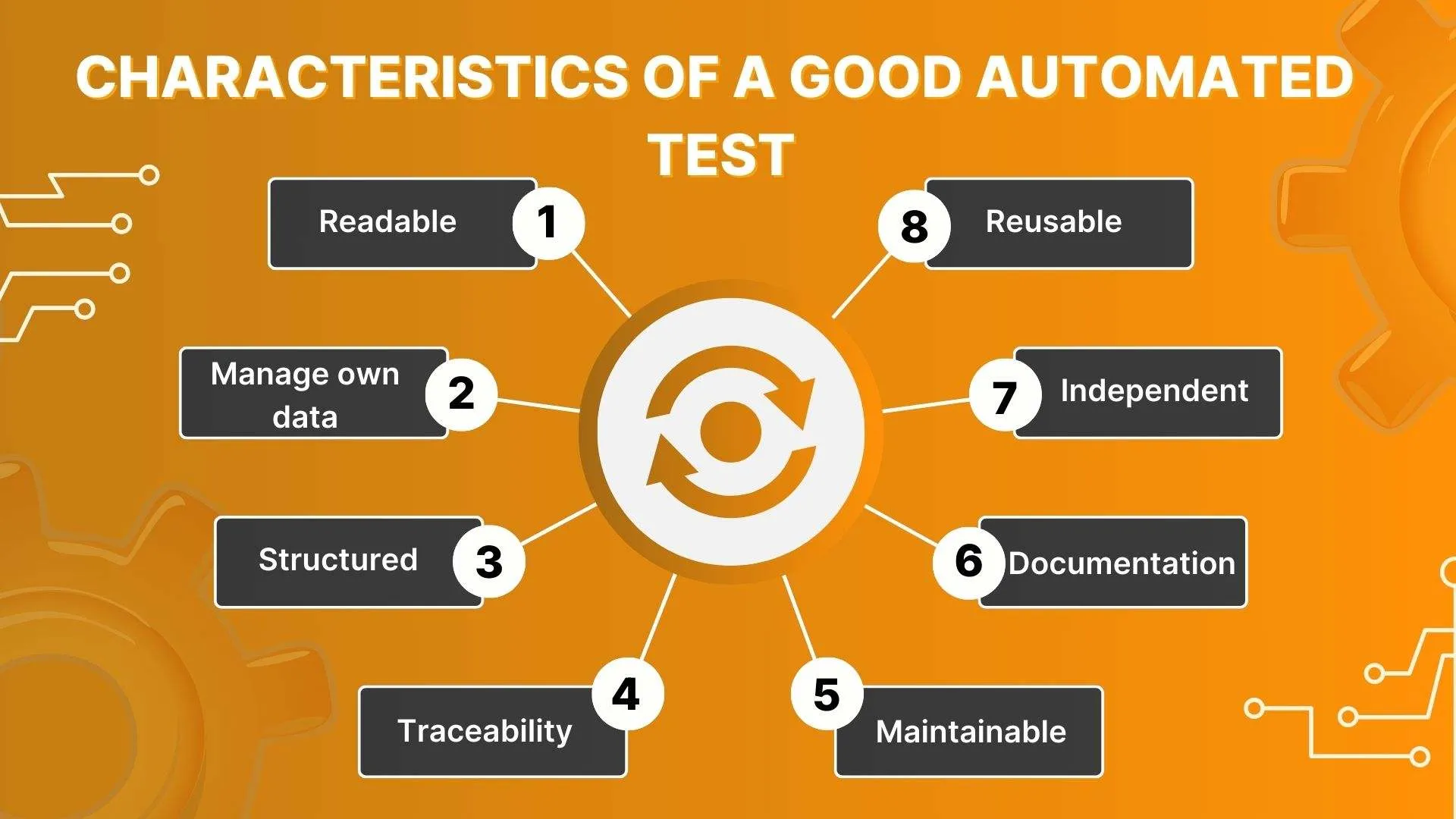
Test Automation Planning and Strategy Ideas
When planning your test automation strategy, it’s essential to have a comprehensive approach that aligns with your project goals and ensures efficient and effective testing. 🚀
This concerns combining data-driven testing and compliance testing to adhere to industry standards, along with integrating continuous test automation to optimize internal procedures and adjust to frequent code modifications in the development process.🔍
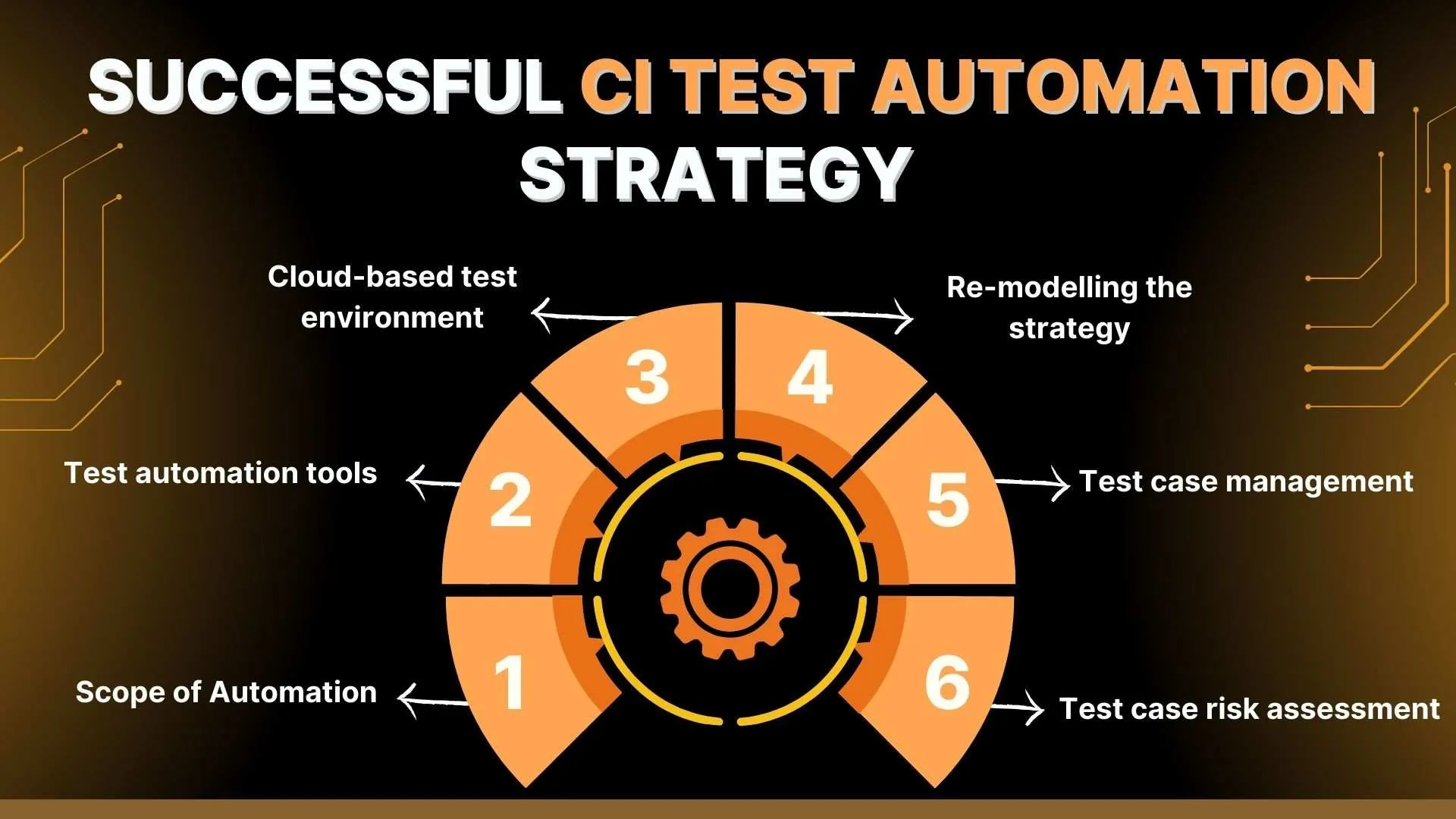
- Understand Your Testing Needs 📊: Begin with a thorough assessment of your product and its requirements to determine the scope of testing needed.
- Select the Right Tools 🔧: Tool selection is pivotal. Choose tools that offer the features you need and are compatible with your tech stack.
- Develop Your Test Cases 📝: Effective test cases are the backbone of your automation strategy. They should be well-thought-out, clear, and maintainable.
- Continuous Collaboration 🤝: Foster a culture of continuous collaboration between developers, testers, and other stakeholders to ensure alignment and efficiency.
- Training and Skill Development 📚: Invest in training and skill development to ensure your team is equipped to handle the test automation tools and processes.
- Performance Monitoring and Optimization ⚙️: Monitor the performance of your automated tests and optimize them to reduce run times and improve reliability.
- Define Scope and Objectives 🎯: Clearly define what aspects of the testing process you want to automate and set specific goals to guide your strategy.
- Test Environment Setup 🌐: Ensure your test environment closely mirrors your production setup for accurate test results.
- Define Test Data Requirements 📊: Identify the data needed to support your automated testing scenarios, emphasizing data privacy and security.
- Link to CI/CD Pipeline 🔄: Connect automated tests with a CI/CD pipeline to establish a detailed testing process and seamless integration.
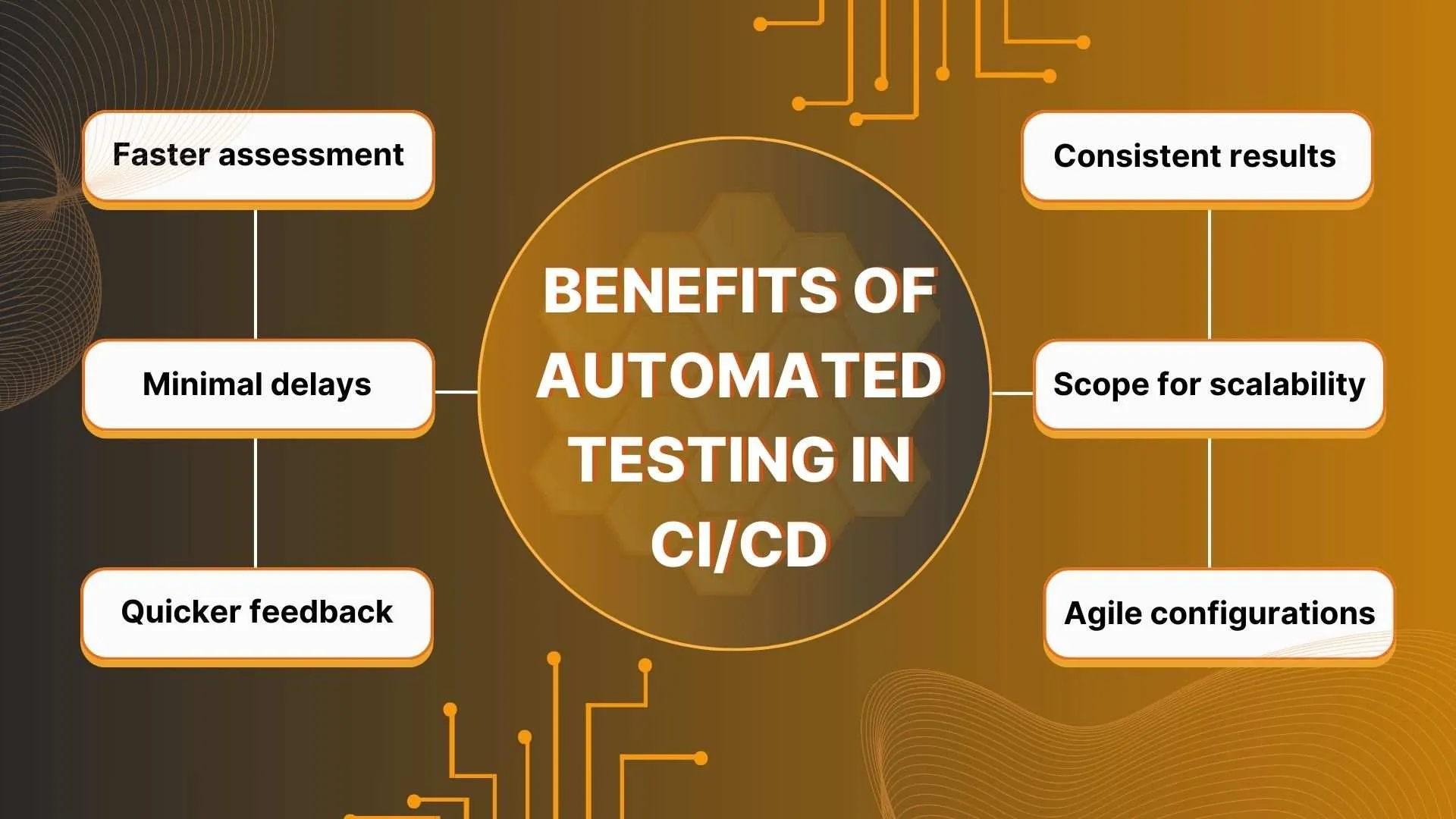
What Is Their Experience with Test Automation Frameworks?
Experience with test automation frameworks like Selenium and Appium is generally positive. They're recognized for their robust capabilities in efficient and reliable automated testing.🌟

Selenium, an open-source framework, automates web applications for testing. It supports multiple browsers, integrates with various programming languages, and facilitates cross-browser testing and parallel test execution.🌐
Appium, also open-source, automates mobile applications across iOS and Android platforms. It extends the Selenium WebDriver protocol to mobile testing, ensuring a seamless testing experience for both web and mobile applications.📱
Both frameworks have evolved with community support, offering documentation, tutorials, and forums. The choice between Selenium and Appium depends on project-specific needs like application type and required testing capabilities.
What Automation Tools and Technologies Do They Specialize In?
Providers should be skilled in using different automation tools to meet various needs. 🛠️ Whether it's free tools like Selenium or paid ones like Unified Functional Testing (UFT), knowing a range of tools ensures they can adapt. Additionally, staying updated on new automation technology is essential for providing high-quality solutions that align with the evolving needs of clients.
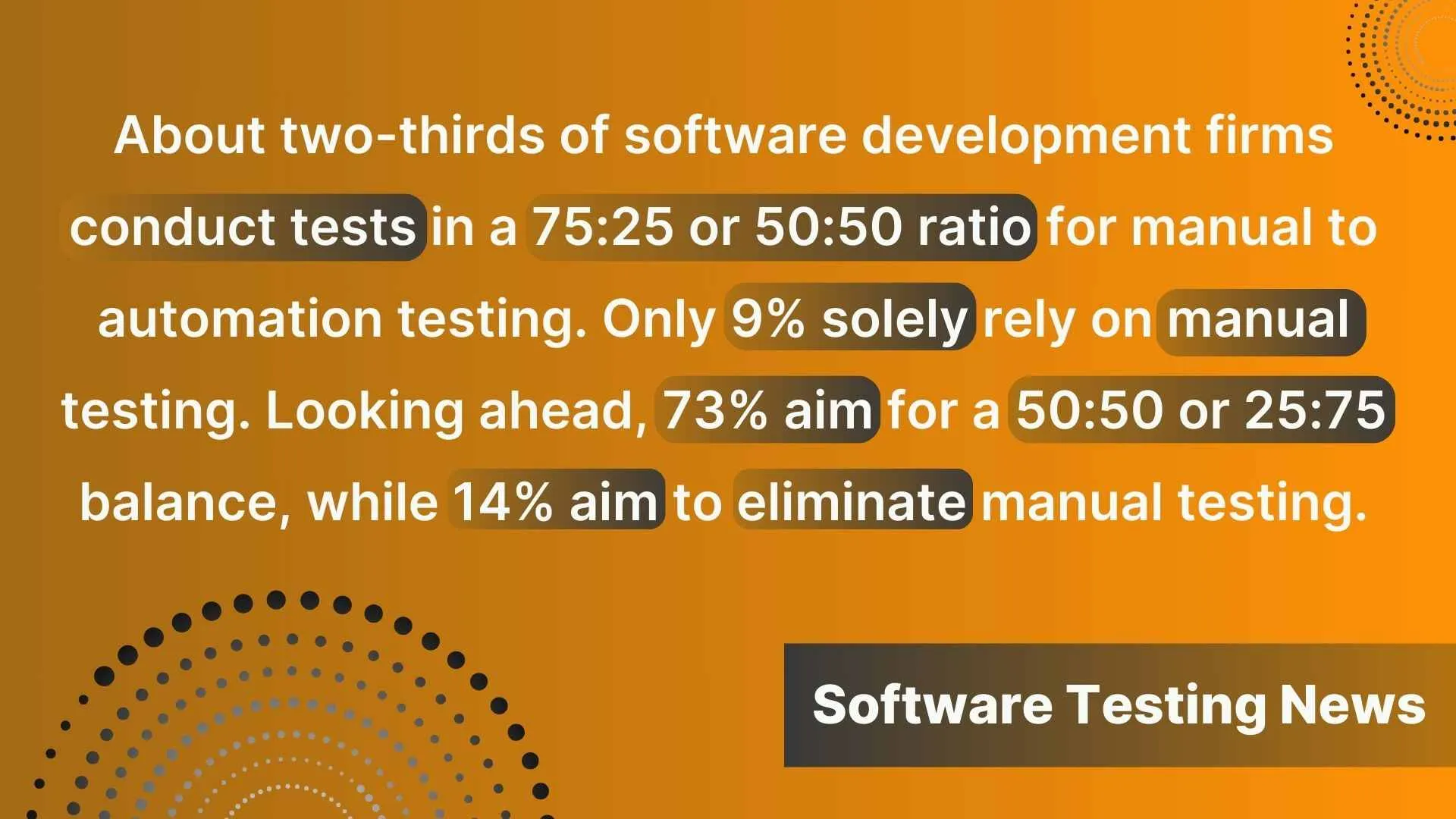
What Is the Pricing Model and How Does It Align with Our Budget?
The pricing model for test automation services can vary widely depending on the provider and the services offered. Generally, the models include:
- Subscription-Based Plan
- Services like Perfecto offer monthly or annual subscription plans, which may start at around $83 per month per parallel test, billed annually.
- Pay-As-You-Go or Usage-Based
- Some services, such as those offered by Cypress Cloud, provide a free tier for small teams, with the option to pay for additional test results as needed.
- Testing as a Service (TaaS)
- TaaS models are on-demand, allowing businesses to subscribe to services as needed without investing in a separate team.
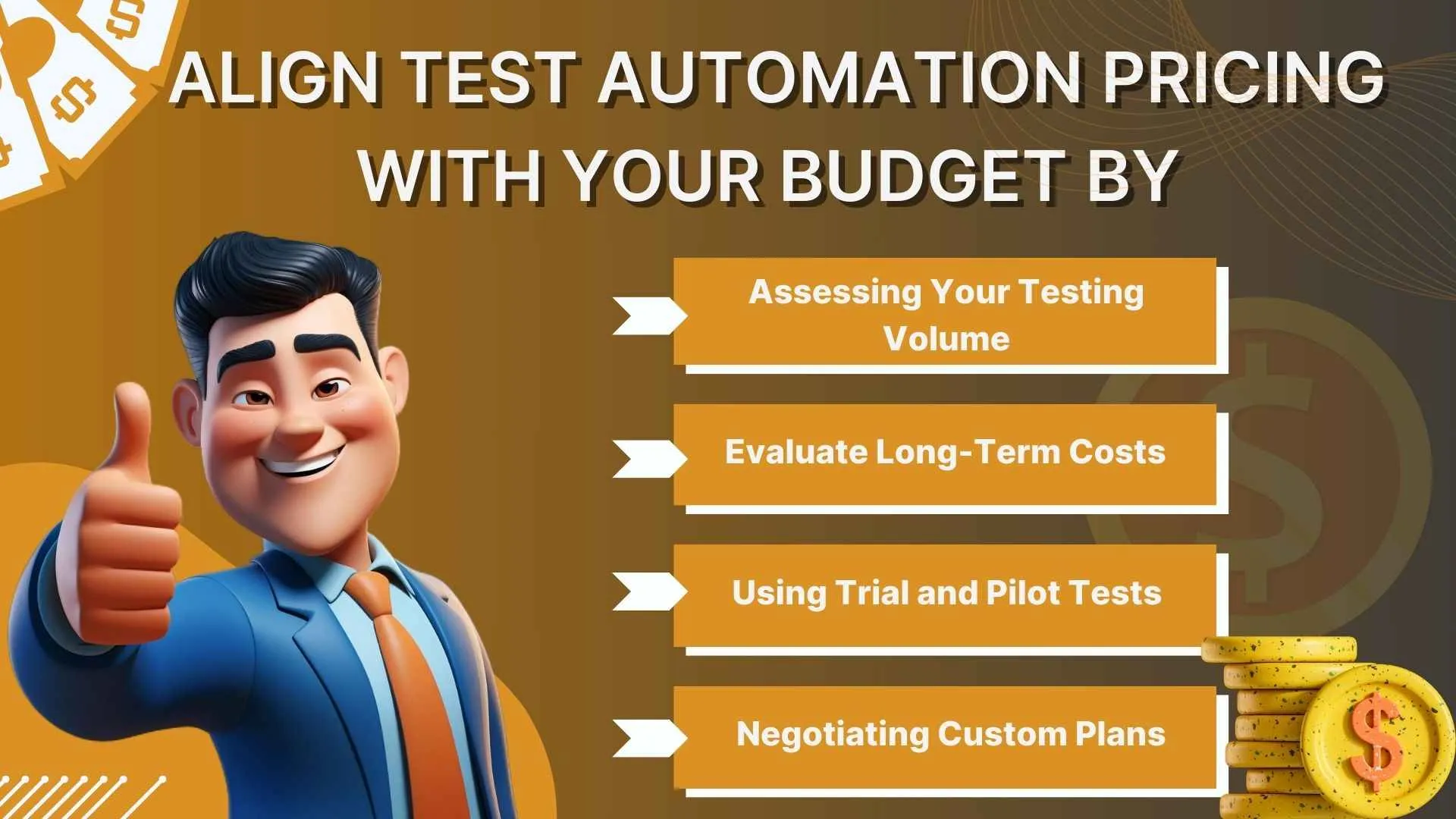
To align with your budget, consider the following:
- Assess Your Testing Volume
- Estimate the number of tests you’ll run monthly or annually to determine if a subscription or pay-as-you-go model is more cost-effective.
- Evaluate Long-Term Costs
- Consider the long-term benefits and potential cost savings of automated testing against the initial investment.
- Trial and Pilot Tests
- Utilize free trials or pilot programs to assess the service before committing to a full subscription.
- Negotiate Custom Plans
- For enterprise-level needs, discuss custom plans with providers to get a package that fits your budget and testing requirements.
It’s important to carefully review the pricing details and terms of service for each provider, as costs can vary based on the number of users, parallel tests, and other factors. Aligning the pricing model with your budget will require a clear understanding of your testing needs and a comparison of the different services available to find the best fit for your project.📊

Are They Up to Date with the Latest Trends and Best Practices in Test Automation?
Yes, test automation services typically stay up-to-date with the latest trends and best practices to remain competitive and effective. As of 2024, some of the key trends and practices in test automation include:
- AI-Assisted Testing: The utilization of artificial intelligence and machine learning in automation testing is on the rise, enabling more efficient and accurate testing.🤖
- QAOps: The adoption of QAOps, which integrates quality assurance into the CI/CD pipeline, is gaining widespread acceptance.🔧
- Shift-Left Testing: There is a growing trend towards shift-left testing, wherein testing is conducted earlier in the development cycle.⬅️
- Mobile Automation Testing: Automated mobile app functional and security testing is experiencing increased popularity.📱
Additionally, there is a significant rise in cloud-based testing platforms that offer scalability and flexibility, allowing organizations to efficiently manage and execute their testing processes. These platforms provide the ability to scale resources up or down based on testing demands, facilitate easier collaboration among distributed teams, and reduce the overhead associated with maintaining on-premises infrastructure.
By leveraging cloud technology, companies can achieve faster testing cycles, better resource utilization, and improved overall efficiency in their testing operations. ☁️
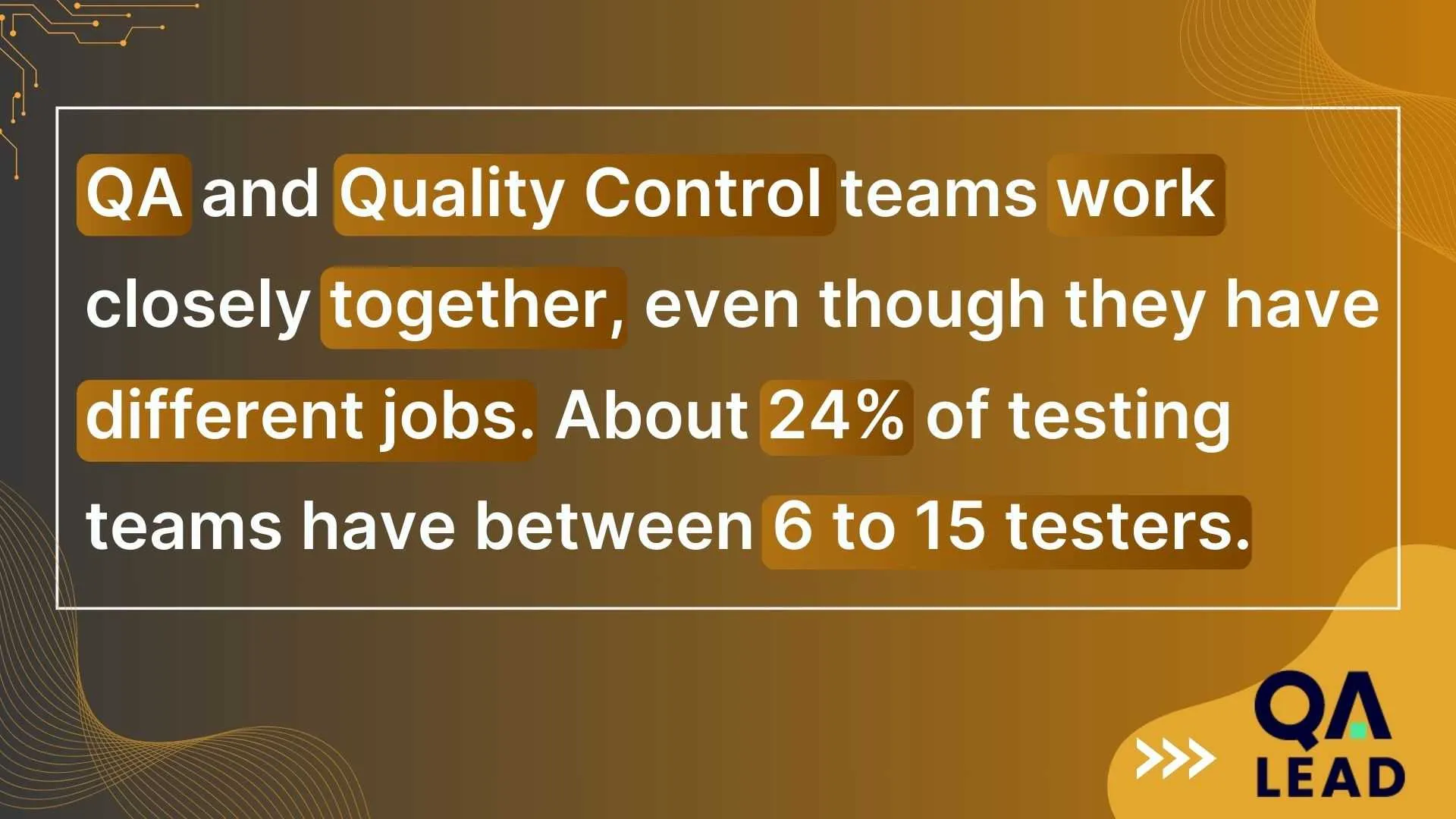
Wrapping Up!!
Choosing the right test automation service provider is vital for project success and product quality. ✅ Trends like AI-assisted testing and QAOps enhance testing efficiency but may come with additional costs. 🤖 Consider factors such as experience with automation frameworks and budget alignment when selecting a dedicated team and provider. 💼
Stay updated on the latest trends for effective testing strategies and ensure high-quality software solutions through informed decisions. 📚 DevOps services can further streamline the testing process for optimal results. 🚀
People also asked
👉🏻 How test automation services can be changed to fit a certain project's needs?
Test automation services can be customized to fit the specific requirements of a project by adjusting testing methodologies, selecting appropriate tools and frameworks, and scaling resources accordingly.
👉🏻 Can we use services for test automation in mobile applications?
Yes, test automation services can be used for testing mobile applications. With the increasing popularity of mobile devices, it's essential to ensure the quality and reliability of mobile apps.
👉🏻 How are the latest digital technologies used in test automation services?
Test automation services leverage the latest digital technologies such as artificial intelligence (AI), machine learning (ML), and robotic process automation (RPA) to enhance testing capabilities.
👉🏻 What is the meaning of automation services?
Automation services refer to a range of offerings aimed at automating various aspects of the testing process. Automation services streamline testing efforts, improve efficiency, and ensure the quality of software products.
👉🏻 What is API and services test automation?
It focuses on testing APIs and backend services, ensuring functionality, performance, and seamless integration.





%201.webp)

